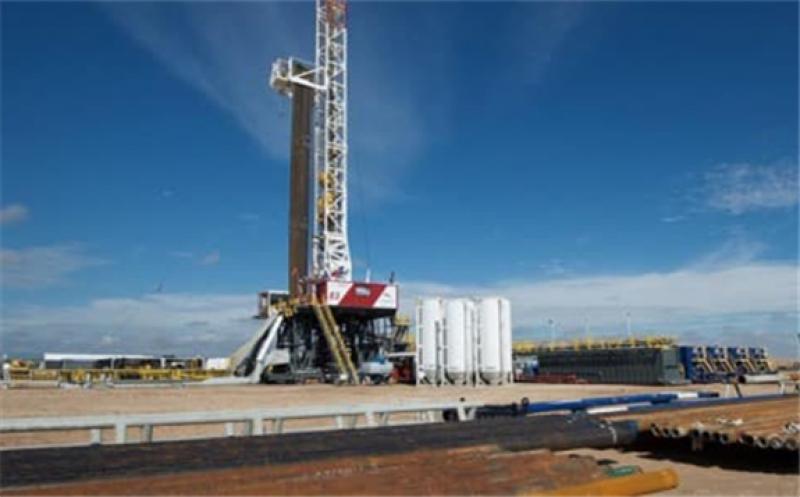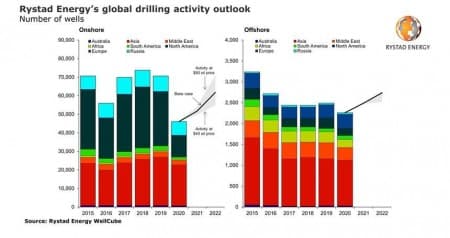After a challenging 2020, the oil and gas demand recovery – supported by vaccination efforts and OPEC+ supply cuts – is proving good for drilling activity. Rystad Energy expects around 54,000 wells to be drilled worldwide in 2021, a 12% increase from 2020 levels. In 2022 drilling is set to increase even more, by another 19% year-on-year to about 64,500 wells, though activity will still fall short of the 73,000 wells drilled in 2019.

Onshore drilling activity is expected to increase by 12% from the 46,000 wells drilled in 2020 to about 51,700 wells in 2021, before climbing by another 19% in 2022 to reach around 61,700 wells. Despite the increased activity, it still looks like drilling needs some more time to recover to pre-pandemic levels, as the onshore well count was nearly 71,000 in 2019.
In the offshore segment, we expect drilling activity to increase year-on-year by about 10% in both 2021 and 2022. This will bring the number of offshore wells drilled to nearly 2,500 this year, from less than 2,300 in 2020, and we forecast that the corresponding number for 2022 will surpass 2,700.
Such a healthy recovery is in fact poised to propel offshore drilling activity beyond pre-pandemic levels during the next two years, as the number of offshore wells drilled globally in 2019 was just shy of 2,500. This means the recovery of offshore drilling will already happen in 2021, with 2022 being a year of further growth.
“In contrast to previous years, when the North American shale sector-led production growth, we expect the onshore and offshore shelf in the Middle East and the deepwater market in South America to be the main drivers of growth going forward. To recover production levels, operators will have to launch new drilling plans in tandem with maintenance and enhancement programs for existing wells, opening significant opportunities for well service suppliers in the years ahead,” says Daniel Holmedal, energy research analyst at Rystad Energy.

The onshore segment remains more sensitive, particularly within the North American shale sector, where continued capital discipline among operators is pushing most activity out to 2022 and beyond. Shale-focused operators have already guided relatively flat drilling and completion budgets for 2021. Well services spending in the region is expected to grow from $50 billion in 2020 to $54 billion in 2021, with the stimulation segment seeing higher growth compared to other well services segments.
This is driven by a high number of drilled but uncompleted wells, supporting stimulation spending at the start of 2021. Should the oil price remain above $60 for the rest of the year, shale operators would be well-positioned to increase activity in the second half of 2021 and into 2022.
For offshore drilling activity, the deepwater markets in Europe and Africa are expected to remain relatively stagnant compared to other top regions in 2021. In Europe, this comes after a strong year of activity in 2020, driven by high project sanctioning activity from 2017 through 2019. Most of the deepwater growth comes from North and South America, where Brazil, Guyana and Mexico are the most prominent drivers of the upswing.
On the well intervention side, West Africa and the Middle East could provide a strong market in the coming years with a total of around 10,000 active offshore wells on oil fields, with an average well age of 16 and 21 years, respectively. In comparison, most other regions have an average well age of between 10 and 15 years.